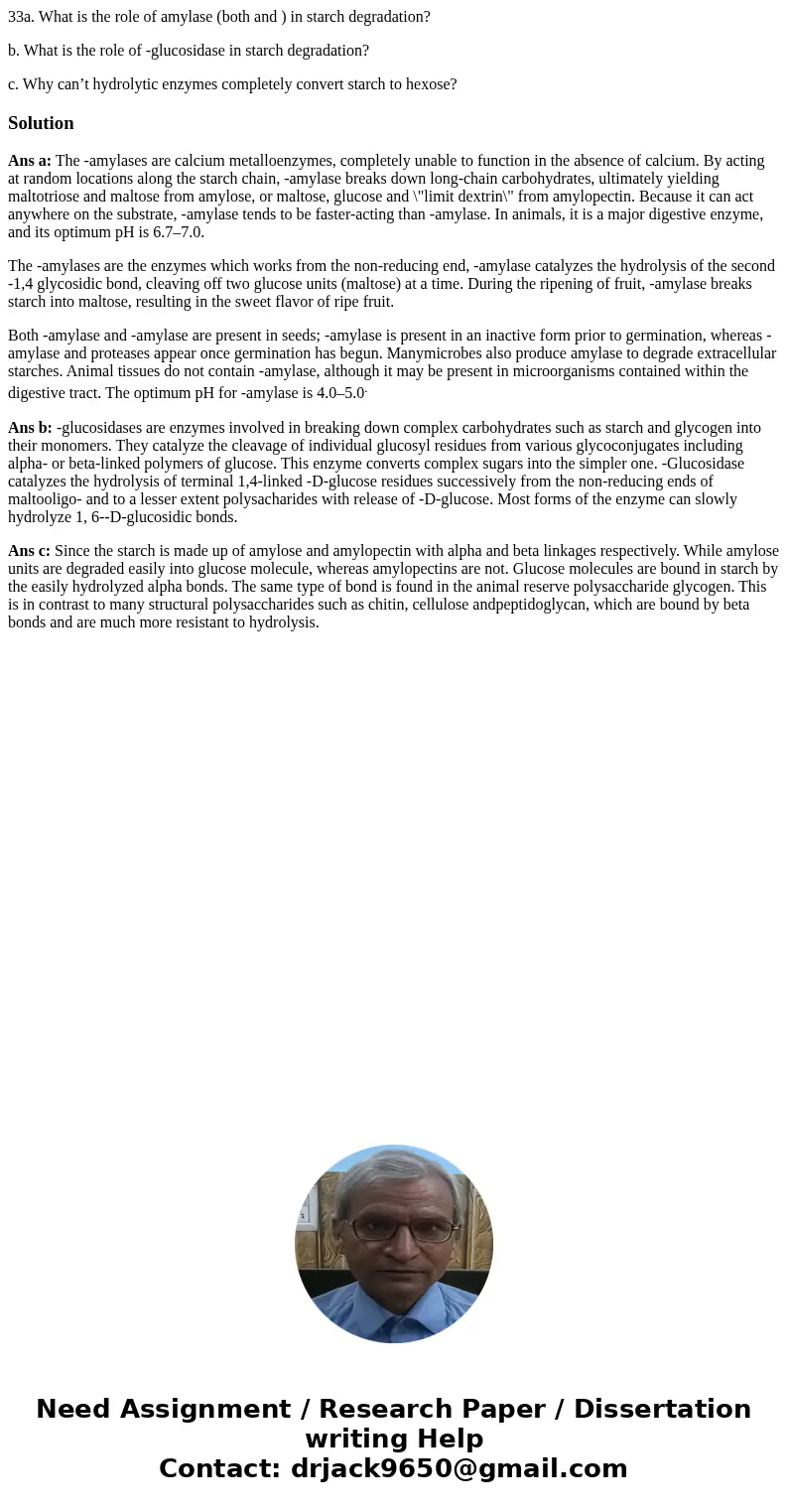33a What is the role of amylase both and in starch degradat
33a. What is the role of amylase (both and ) in starch degradation?
b. What is the role of -glucosidase in starch degradation?
c. Why can’t hydrolytic enzymes completely convert starch to hexose?
Solution
Ans a: The -amylases are calcium metalloenzymes, completely unable to function in the absence of calcium. By acting at random locations along the starch chain, -amylase breaks down long-chain carbohydrates, ultimately yielding maltotriose and maltose from amylose, or maltose, glucose and \"limit dextrin\" from amylopectin. Because it can act anywhere on the substrate, -amylase tends to be faster-acting than -amylase. In animals, it is a major digestive enzyme, and its optimum pH is 6.7–7.0.
The -amylases are the enzymes which works from the non-reducing end, -amylase catalyzes the hydrolysis of the second -1,4 glycosidic bond, cleaving off two glucose units (maltose) at a time. During the ripening of fruit, -amylase breaks starch into maltose, resulting in the sweet flavor of ripe fruit.
Both -amylase and -amylase are present in seeds; -amylase is present in an inactive form prior to germination, whereas -amylase and proteases appear once germination has begun. Manymicrobes also produce amylase to degrade extracellular starches. Animal tissues do not contain -amylase, although it may be present in microorganisms contained within the digestive tract. The optimum pH for -amylase is 4.0–5.0.
Ans b: -glucosidases are enzymes involved in breaking down complex carbohydrates such as starch and glycogen into their monomers. They catalyze the cleavage of individual glucosyl residues from various glycoconjugates including alpha- or beta-linked polymers of glucose. This enzyme converts complex sugars into the simpler one. -Glucosidase catalyzes the hydrolysis of terminal 1,4-linked -D-glucose residues successively from the non-reducing ends of maltooligo- and to a lesser extent polysacharides with release of -D-glucose. Most forms of the enzyme can slowly hydrolyze 1, 6--D-glucosidic bonds.
Ans c: Since the starch is made up of amylose and amylopectin with alpha and beta linkages respectively. While amylose units are degraded easily into glucose molecule, whereas amylopectins are not. Glucose molecules are bound in starch by the easily hydrolyzed alpha bonds. The same type of bond is found in the animal reserve polysaccharide glycogen. This is in contrast to many structural polysaccharides such as chitin, cellulose andpeptidoglycan, which are bound by beta bonds and are much more resistant to hydrolysis.

 Homework Sourse
Homework Sourse